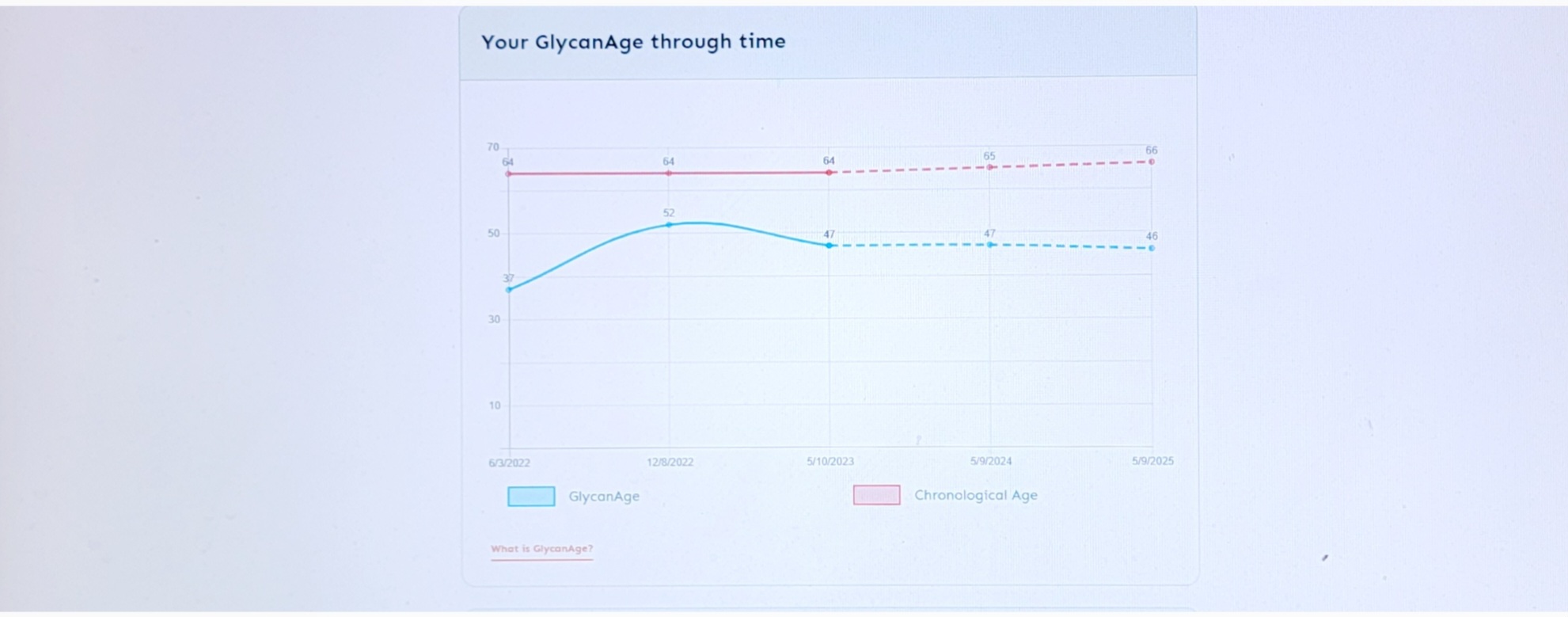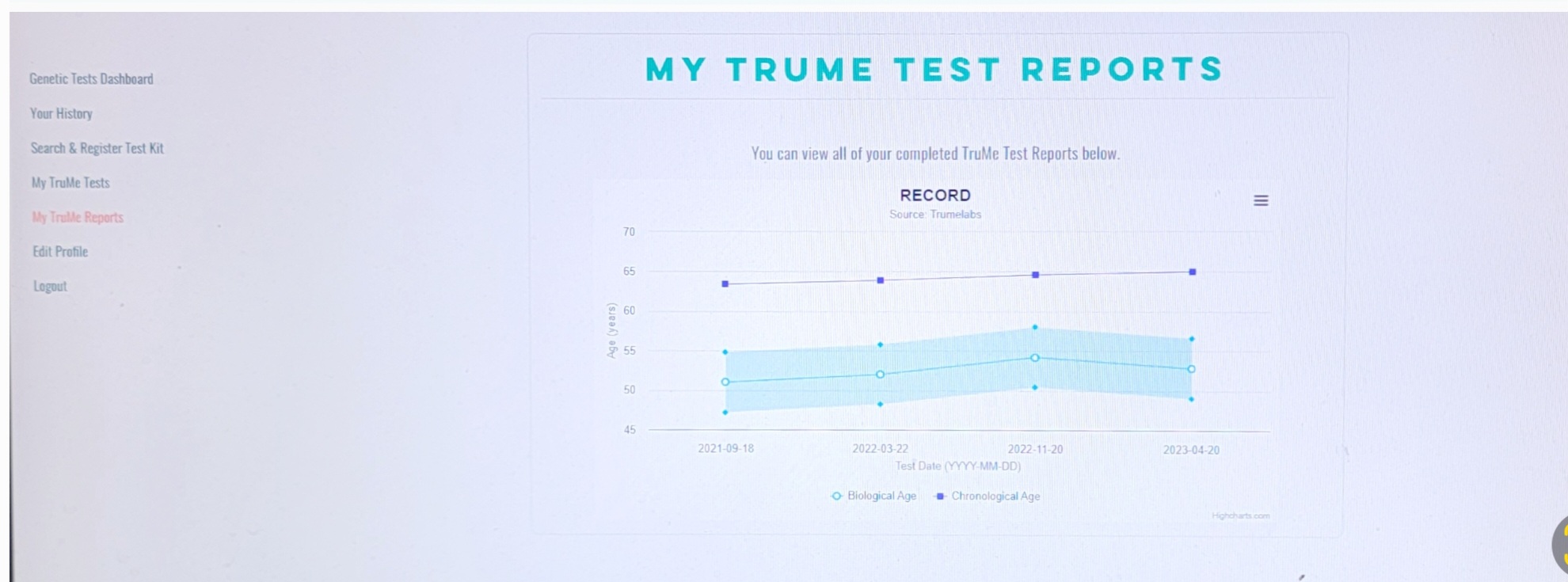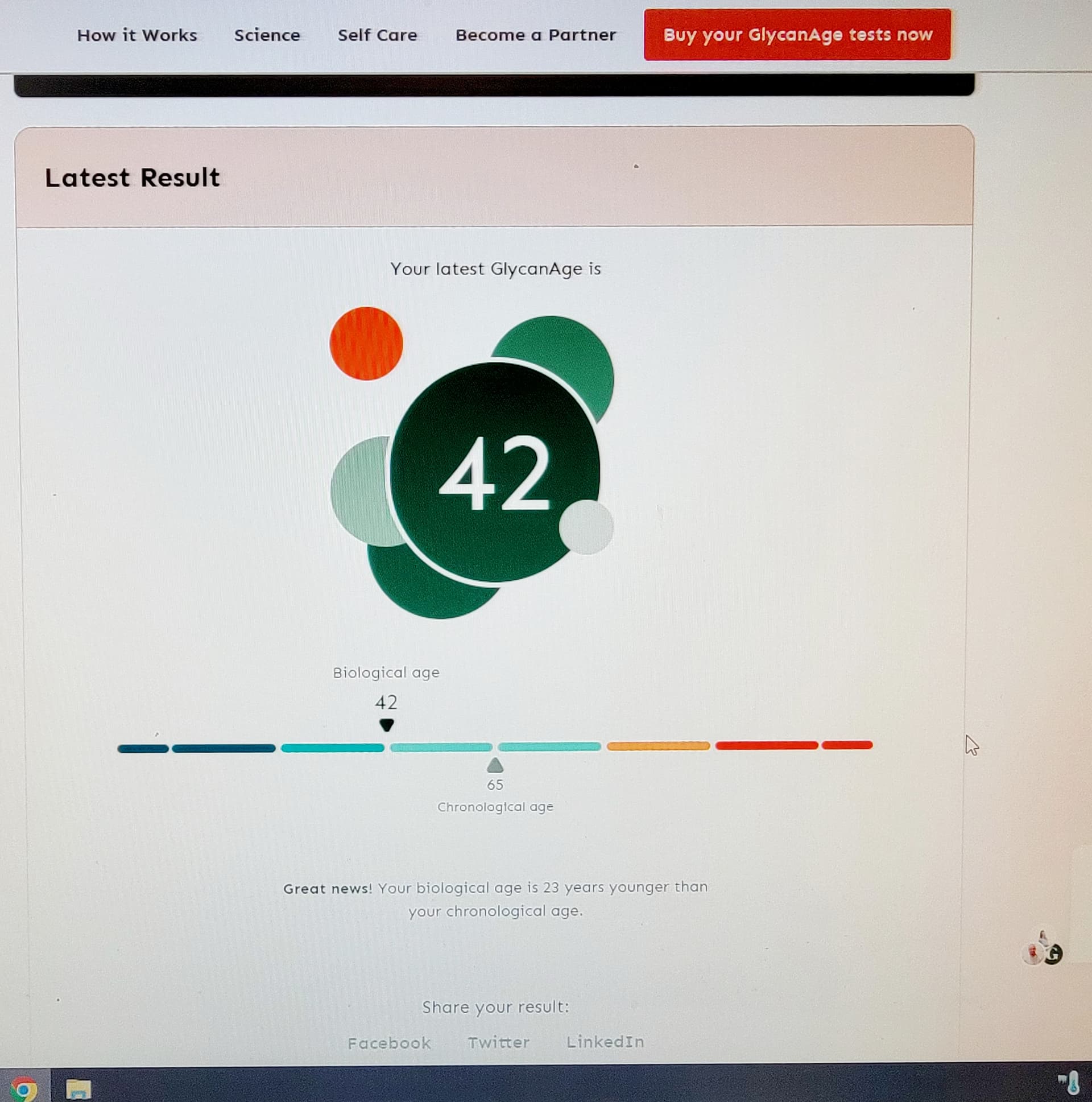I’m confused. You said you tried Siroboon. But in the result it shows Rapamune.
I’ve been taking Biocon Sirolimus for the last four months. Yesterday I took 8mg of the Siroboon brand.
Three times in the past I have tested my rapamycin blood level two hours after taking the Biocon
- 8mg = 17.1 ng/ml
- 8mg = 12.9
- 4mg with Grapefruit juice = 31.9
Two hours after dosing the Siroboon yesterday my result showed just 3.1 ng/ml???
I’m not ready to throw it away. I’ll try a couple of more blood tests. 4mg with GFJ and 8mg but test after 48 hours.
I’m 6’1" and 215 lbs.
Wow! That’s a huge difference. Can you share how close to exactly 2 hours you were on all 4 tests? Also, aside from the one time with gfj were these all totally empty stomach first thing in the morning or was there food or evoo involved?
I have always taken my rapa at 9:00 a.m. for an 11:00 a.m. Labcorp appointment. The appointments have never been late- all of the tests were within a minute or two of two hours.
All of the doses were taken on an empty stomach- although I swallowed 1+oz EVOO with the 8mg dose that registered 12.9 (EVOO slows absorption? I read that someplace on this site)
I guess I’m hoping this is just an anomaly- I have 100 of the 2mg Siroboon pills and I’m pretty sure I can’t return them to IndiaMart!!! I’m thinking I might need GFJ to get them up to the desired range.
Sounds like you’ve tested very close to 2hrs with all of your labs. I don’t see how a level of 3.1 can be possible other than the siroboon being much weaker than the rapacon. I wonder has anyone else on this forum taking siroboon has tested a peak?
We were just discussing why people shouldn’t be having their blood drawn two hours post dosing in another thread.
Also, the study mentioned in post 2 of this thread used Sirolimus liquid solution rather than enteric coated pills.
Pfizer has stated it takes an average of three hours to reach Tmax after healthy persons take the tablet on an empty stomach. “Following administration of the sirolimus tablet, sirolimus tmax was approximately 3 hours after single doses in healthy volunteers.”
But this is for Pfizer’s tablets. There’s no guarantee that tablets from other manufacturers dissolve and get absorbed at the same rate.
My suggestion is that people wait five hours before having their blood drawn. Or longer.
Yes. We were also discussing this even more recently here: Rapamycin and Grapefruit Juice - #302 by stealle
I am personally on board with the idea that trying to directly target t-max is just too difficult. It’s better to have the sirolimus level drawn at 48 hours and then extrapolate the t-max from the data we have available to us (as described in the link above). And, it would be great if hitch would do that. But, just based on the info he provided there are very few possibilities. It could have been a lab error (unlikely). Or, it could mean the siroboon didn’t peak yet (seems strange it the level didn’t get a little higher than it did after 2hrs). Or, it’s weak.
Well, as I just noted, Pfizer said the Tmax for their tablets on an empty stomach averages three hours. Plus, Pfizer uses nanocrystal technology, and part of the advertised benefit is “quicker onset of action.” That’s why I suggested waiting a minimum of five hours for other brands. Or even the following day for comparison purposes.
In case you didn’t see this post… after going on 36ng/mL for 7 months… based on Mikhail Blagosklonny recommendation to go high as possible with no side effects. You can have silent pathology. My biological markers aged decades… not good!
From Matt Kaeberlein who is the best: “I absolutely think it’s possible that 36mg could be net detrimental to health while 6-8 mg could be beneficial. I am certain the optimal dose will be different for different people.”
I am fairly typical and those high doses were not good for me N=1. I reduced back to 6-8 mg and my biological markers went back to a younger age… took 8 months to get there again.
You are getting high doses in your blood based on you measurement… but does that equate to positive health benefits??
The argument of high doses to cross the blood brain barrier… Matt Kaeberlein shoots down too. Saying peripherally the reduction of brain inflammation may be enough.
We are all flying in the dark - Peter Attia
How much grapefruit juice did you use?
“I am fairly typical and those high doses were not good for me N=1. I reduced back to 6-8 mg and my biological markers went back to a younger age… took 8 months to get there again.”
Which biological markers? Was Glycanage one of them?
I used GlycanAge for inflammation.
TruMe Labs for epigenetic methylation.
In both tests the aging spike went up with more rapamycin 38 mg week to 10 days. Same dates.
Took a big hit.
GlycanAge has since gone down to 42 biological age. TruMe 51.
Holy shit, I’ve also been using high rapamycin doses [there’s some evidence they’ve done more harm than good - my 2020 blood tests, before I used larger-than-small doses, were near-ideal on all dimensions], and will dial back (though I also have semaglutide now, which is probably better for me than rapamycin)
Is TruMe just the 1st-generation epigenetic aging clocks (Horvath/Hannum)?
TruAge Science
As with all epigenetic tests, TruAge measures the amount of methylation of your DNA at certain regions that have shown a link to ageing. Their lab uses the bisulfite conversion techniquw; one of the three common methods along with differential enzymatic cleavage of DNA and affinity capture.
TruAge analyses the DNA methylation (DNAm) profiles of 9 small regions (loci) of DNA. For comparison, the original Horvath clock uses 353 CpG sites and his latest GrimAge clock uses 1,030.
So maybe 9 sites seems a bit low, however, even GrimAge only uses a fraction of the
28 million CpG sites in the human genome. There will always be a statistical error, and TruMe labs claim that their studies show an error margin of 4.6 years.
NOTE: the TruAge Explorer saliva test shouldn’t be confused with the more expensive ($399) TruAge blood test from TruDiagnostic which uses 900,000 methylation loci to determine your biological age.
Source: https://liveforever.club/blog/truage-biological-age-test-review
I asked Matt Kaeberlein about increased biological aging correlation.
Matt said this: : Rapamycin dose - I honestly don’t know. I understand Misha’s (Blagosklonny) rationale for pushing it as high as possible until you get to side effects. My concern there is that you might be getting to side effects and not know it right away or at all (silent pathology) until it’s too late to reverse the damage. I have no evidence for that, but it’s a concern I have.
I absolutely think it’s possible that 36mg could be net detrimental to health while 6-8 mg could be beneficial. I am certain the optimal dose will be different for different people.
I find it a little hard to reconcile the data we have from animal testing, with the issue of potentially negative impacts at higher dosing of rapamycin. I’m not saying it may not be true, I just don’t understand how it would be happening, and at what seem to be comparatively low doses … e.g. 36mg/in one weekly dose. It needs to be explored/researched more, that is for sure.
It seems that the mouse studies would suggest that we have a lot of headroom to explore in terms of higher dosing regimens (aside from the immune suppression issue). Per the data below:
| Sirolimus Dose |
Mouse mg/kg/day Dose |
Mouse: Blood/Sirolimus Level |
Human mg/kg/day Dose |
Dose for 60kg Human | Daily Dose adjusted for longer half-life (/4) |
|---|---|---|---|---|---|
| 4.7ppm | ∼2.24 | 3 to 4 ng/mL | 0.182 mg/kg | 10.92 mg | 2.73 mg |
| 14ppm | ~6.67 | 9-16 ng/mL | 0.542 mg/kg | 32.54 mg | 8.135 mg |
| 42ppm | ~20 | 23-80 ng/mL | 1.626 mg/kg | 97.56 mg | 24.39 mg |
| 126ppm | ~60 | 4.878 mg/kg | 292.68 mg | 73.17 mg | |
| 378ppm | ~180 | 45 to 1800 ng/mL | 14.634 mg/kg | 878.04 mg | 218 mg |
Based on the FDA animal to human dosing conversion guide here.
Note: ½ life for sirolimus in mice is approx. 15 hours, vs. approx. 62 hours in humans. So, mice metabolize sirolimus approximately 4 times faster than humans.
Perhaps it’s the rebound dynamic when it’s weekly/intermittent and in the “high current biohacker range”
What were your CRP or other inflammation scores?
Alex - I sent you my full report as a Private Message - Enjoy!
One hypothetical possibility I can think of for such silent pathology with high single dosing may be insidious onset hearing loss occurring gradually over a multi-year period. Hearing loss is already listed as a possible side effect in patients. So there must be rare reports of it in sensitive individuals taking higher doses for immune suppression.
A primary reason for taking periodic high doses is to get better penetration across the BBB. However, there’s also something called the blood-labyrinth barrier which protects the sensory epithelia of the inner ear. And it likewise can be overcome. When researchers injected mice at 10 mg/kg, they experienced severe, rapid hearing loss within two weeks as these hair cells died. Unknown is the threshold at which more mild and gradual damage may start in mice other than that 2 mg/kg injections didn’t evidence ototoxicity. The dose makes the poison with medications. And as you ramp up the dose with rapamycin, these delicate cells of the inner ear are among the first to start showing severe toxicity. And that’s actually pretty common in pharmacology particularly with antibiotic drugs.
A silent and progressive adverse effect needn’t be common to become a significant factor in a risk/benefit analysis. For example, in the above hypothetical, what if the spike from very high single doses of the drug elevated the chance of hearing loss or some other rare adverse effect from less than 1/1000 to say, 4% chance?
Edit: I’m not suggesting that I believe this will be an emerging concern at repeated 36 mg single dose. I don’t know, actually. I’m just envisioning a plausible scenario for an unknown emerging silent pathology.
======
Reference study:
Fu X, Li P, Zhang L, et al. Activation of Rictor/mTORC2 signaling acts as a pivotal strategy to protect against sensorineural hearing loss [published correction appears in Proc Natl Acad Sci U S A. 2022 May 17;119(20):e2204956119]. Proc Natl Acad Sci U S A . 2022;119(10):e2107357119. doi:10.1073/pnas.2107357119


